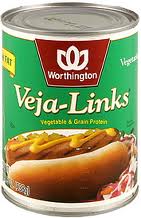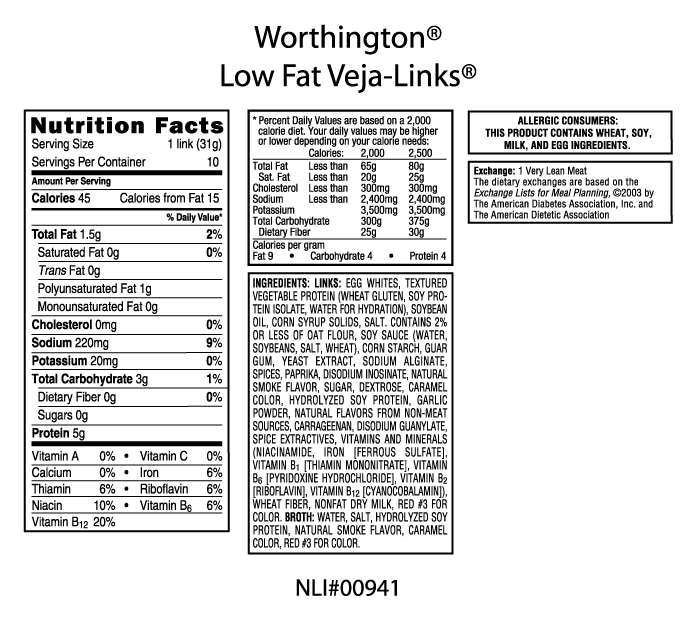A version of this post first appeared in The Atlantic

Conventional wisdom says that weight gain or loss is based on the energy balance model of "calories in, calories out," which is often reduced to the simple refrain, "eat less, and exercise more." But new research reveals a far more complex equation that appears to rest on several other important factors affecting weight gain. Researchers in a relatively new field are looking at the role of industrial chemicals and non-caloric aspects of foods -- called obesogens -- in weight gain. Scientists conducting this research believe that these substances that are now prevalent in our food supply may be altering the way our bodies store fat and regulate our metabolism. But not everyone agrees. Many scientists, nutritionists, and doctors are still firm believers in the energy balance model. A debate has ensued, leaving a rather unclear picture as to what's really at work behind our nation's spike in obesity.
Bruce Blumberg, professor of developmental and cell biology and pharmaceutical sciences at the University of California, Irvine, who coined the term "obesogen," studies the effect that organotins -- a class of persistent organic pollutants that are widely used in the manufacture of polyvinylchloride plastics, as fungicides and pesticides on crops, as slimicides in industrial water systems, as wood preservatives, and as marine antifouling agents -- have on the body's metabolism. Organotins, which he considers to be obesogens, "change how your body responds to calories," he says. "So the ones we study, tributyltin and triphenyltin, actually cause exposed animals to have more and bigger fat cells. The animals that we treat with these chemicals don't eat a different diet than the ones who don't get fat. They eat the same diet -- we're not challenging them with a high-fat or a high-carbohydrate diet. They're eating normal food, and they're getting fatter."
A widely reported study that came out in January in The American Journal of Clinical Nutrition (AJCN) would seem to dispute this finding: it confirms the belief in the energy balance model, and has been cited as proof by many researchers working in the field. I asked an author of the study, Dr. George Bray, professor of medicine at Louisiana State University, about the myriad of additives and industrial ingredients in our food that were not accounted for in this study. "It doesn't make any difference," he said in a telephone interview. "Calories count. If you can show me that it doesn't work, I'd love to see it. Or anybody else who says it doesn't -- there ain't no data the other way around."
The participants in the AJCN study were given low, normal, and high amounts of protein and 1,000 more calories than needed. The study does not take into account the content and form of calories, how they were processed, or with what additives or industrial chemicals.
Bray doesn't believe that additives or how foods are processed or produced will ultimately affect the outcome of studies. In fact, he completed research in 2007 that he refers to as his "Big Mac study," which fed participants three meals a day for three days giving one group fast-food items like Big Macs and the other group foods made "from scratch." Bray says the results showed that the type of food made no difference: "At least in an acute study measuring glucose tolerance, insulin, and things -- they don't make any difference. Now, if you fed them over a longer time period, it's clearly going to be the quantity that matters, largely."
One study conducted at Princeton University indicates that types of calories do matter. Researchers found that rats drinking high fructose corn syrup (HFCS) gained significantly more weight than rats drinking sugar water, even though the amount of calories consumed was the same. The rats drinking HFCS also exhibited signs of metabolic syndrome, including abnormal weight gain, especially visceral fat around the belly, and significant increases in circulating triglycerides.
Miriam Bocarsly, the lead author of the Princeton study and a Ph.D. candidate there, said in a phone interview: "The question of calories in, calories out is a very good one and is highly debated in the field. You have traditional nutritionists who say 'energy in energy out,' but we have this result and at this point all we can really say is that this is what is happening in the rat model. Something is obviously different between HFCS and table sugar, and the next question is, What is that difference?"
Blumberg says that fructose itself is an obesogen. "Crystalline fructose doesn't exist in nature, we're making that," he says. "Fructose is not a food. People think fructose comes from fruit but it doesn't. The fructose that we eat is synthesized. Yes, it's derived from food. But cyanide is derived from food, too. Would you call it a food?"
Robert H. Lustig, a pediatric neuroendocrinologist and a professor of pediatrics at the University of California, San Francisco, also believes that fructose is an obesogen. "I personally do lump fructose in with [obesogens]," he told me in an email. "There are those who don't, because fructose is a nutrient, and they want to think of an obesogen as a foreign chemical. But because fructose tricks the brain into eating more in a free-range situation, it has some properties consistent with an obesogen."
Lustig is another researcher and doctor who finds fault in the calories in, calories out model. "I don't believe in the energy balance model, which is calorie-centric," he says. "I believe in the fat deposition model, which is insulin-centric. The reason is that by altering insulin dynamics, you can alter both caloric consumption and physical activity behavior. This has been my research for the past 16 years." What Lustig means is that by increasing circulating insulin -- often as a result of consuming too much fructose -- people become hungrier and more fatigued, which results in overeating and little motivation to exercise.
Another possible obesogen that has made headlines recently is bisphenol-A (BPA), which is found in an overwhelming number of food items and packaging material. Frederick S. vom Saal, curators' professor at the University of Missouri-Columbia, receives funding the National Institute of Environmental Health Sciences for his research on BPA. "We do animal experiments with chemicals like BPA, and we dramatically alter the way fat is regulated in those animals," vom Saal said in a phone interview. "And they're not changing their food intake."
The Centers for Disease Control and Prevention (CDC) reports that "nearly all" Americans tested have BPA in their urine, "which indicates widespread exposure to BPA in the U.S. population." The American Chemistry Council has called for a ban on BPA in baby bottles and sippy cups (which California and several other states have already done), and some food manufacturers are already moving away from using BPA in their packaging. On Monday, Campbell's Soup announced it will stop using BPA in the lining of its cans. The Food and Drug Administration (FDA) is scheduled to decide by the end of March whether to ban the chemical's use in all food and beverage packaging.
Vom Saal believes that BPA is only the most prominent example of many substances in our food supply and environment that functions as an obesogen. "If people really want to solve the obesity, diabetes, and cardiovascular disease epidemics," he says, "it isn't a wise thing to be ignoring any contributor to this. And we're not obese just because of HFCS, or because of BPA. I also know that nicotine and PCBs and other chemicals are implicated in diabetes and metabolic disease as well."
The energy balance model diverts responsibility back to the consumer because conventional wisdom says the spike in obesity is the result of people consuming more foods than ever before.
Lustig echoes vom Saal's belief that a wide range of substances in our food supply and our environment are likely leading to obesity and metabolic disease based on hosts of studies of various substances. These include soy-based infant formula, phthalates (used in many plastics), PCBs (found in coolant and electrical equipment), DDE (a type of pesticide), fungicides, and atrazine (a common pesticide).
If the obesogen theory comes to be accepted and casts doubt on the energy balance model, the food industry will be in trouble. It would be harder to keep promoting diet and "health" foods that may be low in calories but that also contain an array of substances that may actually prove to contribute to weight gain.
The emphasis that industry places on personal choice puts the onus back on the individual and leaves the consumer with tough decisions to make about industrial food products and additives. The food industry does not disclose what kinds of potential obesogens, like certain organotins or BPA, are in its products, because these substances are not required to be listed on labels and are difficult for the FDA to regulate. With an emerging debate in the scientific community and an absence of information on labels, consumers are left making their best guess on the safety and health of foods.
"People say to me all the time, 'What do I do?'" vom Saal says. "And the answer is, there's not much we can do, because industry has no legal mandate to tell you, and so they refuse to tell you the way they're using these chemicals. How do you avoid something you are blind to?"
The energy balance model also diverts responsibility back to the consumer because conventional wisdom says that the spike in obesity and diet-related disease is the result of people consuming more foods than ever before. But a review of the literature in The Obesity Epidemic: Science, Morality, and Ideology by Michael Gard and Jan Wright asserts that there is no evidence that food intake levels have increased in industrialized countries, or that activity levels have declined. According to Gard and Wright, some studies even suggest a reduction in energy intake over the past several decades.
Julie Guthman, a professor of community studies at the University of California, Santa Cruz, points out in her new book, Weighing In, that the amount of calories consumed across racial lines and income levels varies little, according to a study by the United States Department of Agriculture (USDA). This is despite the fact that obesity and overweight do vary across racial lines and income levels: Poorer people tend to be more obese, and African Americans and Latinos have higher rates of obesity than do whites. This means there must be some other mechanism, Guthman says, besides excess calories, in the varying levels of obesity. In her book, she refers to the possible role of environmental factors like exposure to obesogens and other toxins, stress, and non-nutritional aspects of food.
Guthman would like to see stronger regulation on the part of the government, and a discussion that focuses more on how food is produced and not just on how much is eaten. "I think people would like to say that weight loss is simple and that it's all about changing personal behavior," Guthman says. "So there's an emphasis on trying to make people have better lifestyles or on changing the built environment."
This seems to fit with Marion Nestle's approach to educating people on weight loss. Nestle is the co-author of a new book on the subject, Why Calories Count. "BPA, PCBs, and other such contaminating chemicals can't possibly be good for health," she said in an email. "But it's really hard to prove that they cause demonstrable harm. They might have something to do with obesity -- I suppose it's not impossible -- but why invoke complicated explanations when the evidence for calories is so strong? Let's say obesogens affect a body weight regulatory factor, which they very well might do. But so what? Weight is regulated by more than a hundred biological factors, and these are redundant, which means that if something goes wrong with one of them the others fill in the deficit."
The "so what," Guthman says, is that "We really don't understand the science enough, and there's new evidence in the science that completely re-shifts how we think about these things."
According to Blumberg, the food industry would like to discredit emerging research on obesogens. "What industry typically does is fund studies that produce the opposite conclusions, thereby shedding doubt on the science," he says. "If you take BPA as an example, the vast majority of studies performed by independent government and academic scientists show that it has numerous deleterious effects on health. In contrast, not a single industry-funded or -conducted study has found any hazard associated with BPA."
Can we afford to continue to frame the discussion simply in terms of calories in and calories out? Or by looking only at conventional categories like fat, protein, and carbohydrates and diary, meat, grains, and vegetables? Given the proliferation of industrial pollutants and the ultra-processing of foods in our current food systems, it seems that we can't.
“What new scientific paradigms like this do is shake up the existing science,” Guthman says. “People are resistant to it because so much is embedded in the old paradigm — once you open that up, the science is open to all sorts of other claims.”








 Tuesday night I went on
Tuesday night I went on 



 My latest radio interview with Dr. Robert Zieve on
My latest radio interview with Dr. Robert Zieve on 






